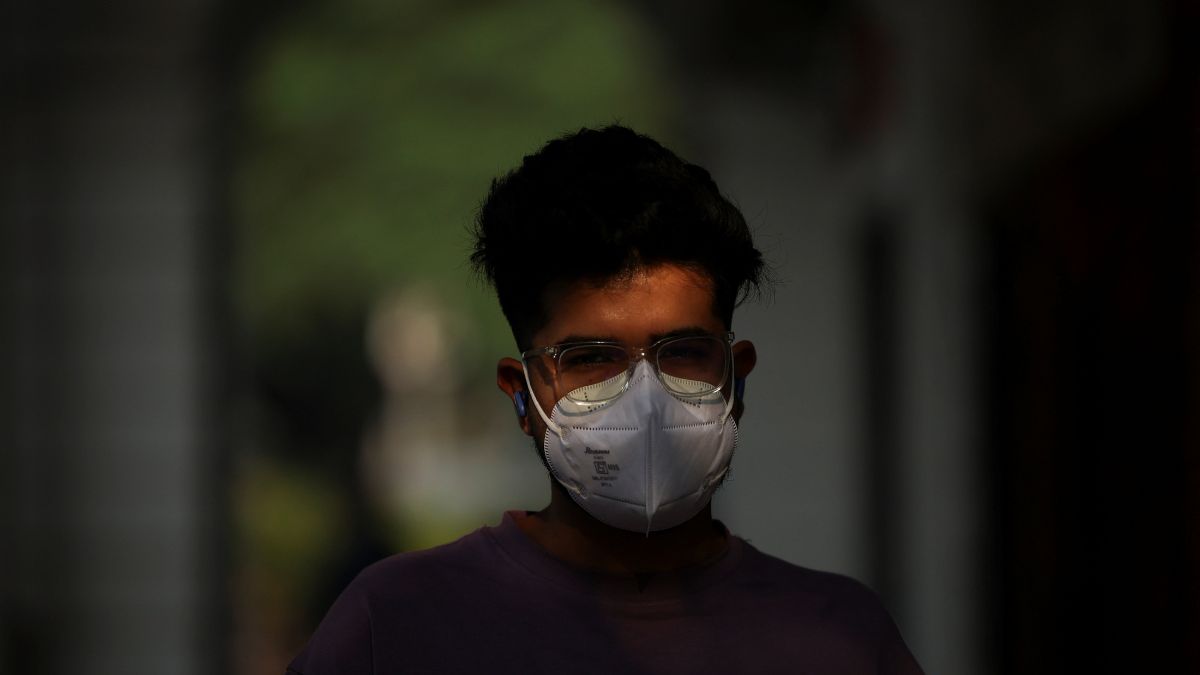Like every year, Delhi is choking again. After plunging to the “severe” category post-Diwali celebrations in the National Capital Region (NCR), the air quality in the national capital improved to the “poor” category on Friday (October 24).
A thick, toxic haze blankets Delhi’s skies before the onset of winter, making it hard to breathe for the city’s residents and stinging their eyes. This ordeal lasts for months as the colder temperatures and low wind speeds trap pollutants near the ground.
This year, the Delhi government has decided to bring some respite by inducing artificial rain through cloud seeding. But is this an effective method to tackle Delhi’s pollution crisis?
We take a look.
Cloud seeding explained
Cloud seeding is a weather modification method to enhance a cloud’s ability to produce rain or snow.
For this, clouds are usually injected with salts like silver iodide, potassium iodide, or sodium chloride to trigger condensation.
Meteorologists identify clouds for seeding which have sufficient moisture but are unable to produce enough precipitation on their own.
The salts, or the seeding agents, serve as nuclei around which water droplets can form or ice can crystallise. These particles are dispersed into clouds using special aircraft, rockets, or dispersion devices kept on the ground.
As water droplets grow, they collide with others in the cloud. As they become heavy, the cloud gets saturated and it rains.
Cloud seeding, also sometimes referred to as artificial rain, has been in practice since the 1940s. It is implemented for various reasons, including to lessen the impact of droughts and hail damage, mitigate forest fires, increase precipitation, and improve air quality by dispersing pollutants.
Delhi to deploy cloud seeding
Delhi is planning to “modify” the weather to produce artificial rain next week. Chief Minister Rekha Gupta said on Thursday (October 23) that a successful trial of the cloud seeding technique was carried out in the Burari area.
“For the first time in Delhi, preparations have been completed to induce artificial rain through cloud seeding, marking a significant technological milestone in the capital’s fight against air pollution. Experts on Thursday successfully conducted a trial test in the Burari area,” she wrote in a post on X.
“According to the weather department, cloudy conditions are expected on October 28, 29, and 30. If the weather remains favourable, Delhi is likely to witness its first artificial rain on October 29,” Gupta added.
VIDEO | A cloud seeding trial flight was conducted from IIT Kanpur to Delhi earlier today.
— Press Trust of India (@PTI_News) October 23, 2025
Delhi Environment Minister Manjinder Singh Sirsa says, “It’s a historic day for Delhi. The first-ever successful trial flight for cloud seeding was conducted at IIT Kanpur… We are ready… pic.twitter.com/htfK0FVWux
Delhi Environment Minister Manjinder Singh Sirsa also took to X to inform about the trial, which saw IIT Kanpur, in coordination with the Delhi government’s Environment department, operating a Cessna aircraft to conduct cloud seeding.
“Today, a trial seeding flight was conducted from IIT Kanpur to the Delhi area via Meerut, Khekra, Burari, Sadakpur, Bhojpur, Aligarh, and back to IIT Kanpur. Cloud seeding flares were fired between Khekra and Burari and over the Badli area using pyrotechnics,” Sirsa said.
Jointly developed by IIT-Kanpur and the Delhi government, the project is aimed at bringing relief from Delhi’s pollution during the post-Diwali smog season.
As per PTI, in its report on the trial run, IIT Kanpur said, “This flight served as a proving mission to assess the capabilities for cloud seeding, the readiness and endurance of the aircraft, the functionality of the seeding equipment and flares, and the coordination among all involved agencies.”
“There is no evidence of any precipitation, as the cloud cover was minimal and the moisture content was well below 15 per cent,” it stated. For the method to work, moisture level of around 50 per cent is usually required.
ALSO READ: Delhi air pollution: How ‘green crackers’ couldn't save the capital from choking
Does cloud seeding work?
Artificial rain, or cloud seeding, helps clear pollutants and dust from the air. Fine particulate matter (PM 2.5) and PM10 get washed away with prolonged precipitation. However, there is no impact on other pollutants such as ozone and sulphur dioxide.
There is a debate about the effectiveness of this technique.
Cloud seeding is not a cure-all for Delhi’s pollution crisis. Its success depends on natural clouds. Shahzad Gani and Krishna AchutaRao, who teach at Centre for Atmospheric Sciences, IIT Delhi, wrote for The Hindu that even when clouds are present, the evidence that “seeding reliably increases rainfall remains weak and contested.”
“And when it rains and reduces pollution, the respite is temporary at best. The overwhelming evidence is that pollution levels go back up within a day or two,” he added.
For cloud seeding, silver iodide or sodium chloride is dispersed into clouds to induce condensation. When done in small doses, there is a low risk linked to the technique.
However, repeated use could affect the environment if these compounds accumulate in soil and water in large quantities.
“Beyond these environmental risks, there is the question of accountability. If cloud seeding coincides with intense rainfall that leads to flooding, causing damage to infrastructure, crops, and livelihoods, or loss of life, who will be responsible?” the experts asked in The Hindu piece.
What China’s experience tells us
China reportedly has the world’s biggest cloud seeding programme globally.
It employed the technique ahead of the 2008 Beijing Olympics to ensure dry weather for the event. The method has been carried out in several regions across the country, such as Guizhou, Shanghai, Gansu and Sichuan.
China deployed the cloud seeding practice to bring more rainfall to its crucial Yangtze in 2022 when drought dried up parts of the river.
Last August, the Asian country carried out a cloud-seeding trial in the dry western region of Xinjiang. A fleet of dual-use drones was used to fire silver iodide rods in the autonomous region’s easternmost city of Hami.
The experiment increased rainfall by more than 4 per cent across more than 8,000 sq km in a day, South China Morning Post (SCMP) reported this May, citing the project team, led by Li Bin, a senior engineer with the China Meteorological Administration (CMA).
It also created over 70,000 cubic metres (18.5 million gallons) of additional precipitation using 1kg of silver iodide.
With inputs from agencies


)

)
)
)
)
)
)
)
)



